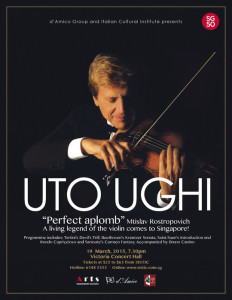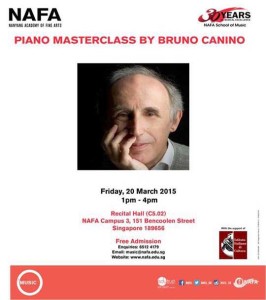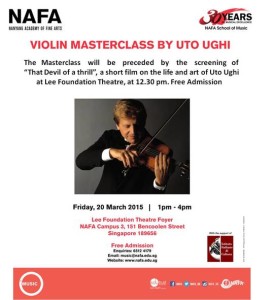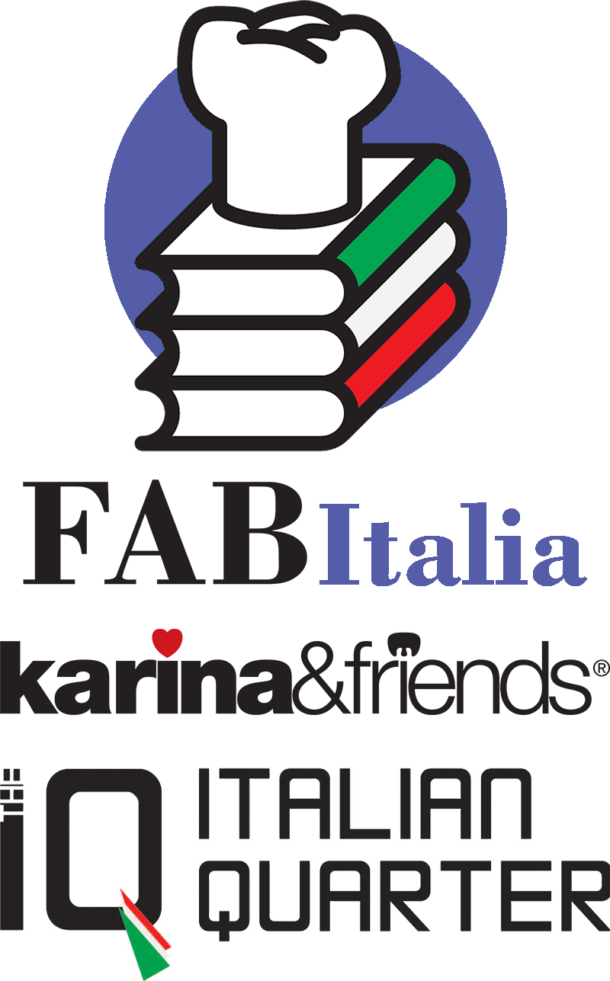All my workshops, lessons, programs, courses, same as most important activities held by FAB Italia Lifestyle of other institutions which involve or interest the Italian Community in Singapore!
FAB Italia wants you to have a great time here with us! If you are a full time resident or just visiting Singapore for your holiday or the weekend FAB Italia is where you need to check to see what is happening in our workshops and venues. Check here to see where there are our latest events.
Check back with us often!
Eating in Rome!
Whenever I go back to my city, I cannot wait to visit my restaurant mates, or friends, who will cook for me such delicious, yummy, and sometimes heavy food, that my wife is always scared that I come back with 10 kg more, as it happened last year.
The problem is that Italians, and not only Italians, cannot resist to Italian food, and Romans cannot resist to the temptation of the Roman cuisine once we are back in town…
Roman cuisine is authentic and traditional from the appetizers to the desserts, and full of history and anecdotes. The primary aim of the recipes was to provide tasty and hearty dishes from less expensive ingredients, which were filling after a hard day of labour. In fact some classic traditional appetizers can serve as a quick and complete meal for those of us who lead more sedentary lives. Fried food triumphs in appetizers; this simple cooking method, which requires some attention, gives rise to some of Roman cuisine’s best recipes. Stringy mozzarella is another characteristic ingredient that makes these simple dishes even better. The irresistible bruschetta is a truly frugal dish. In olden days it was only considered a snack for those who worked outside: farmers, shepherds, woodsmen… It remains a perfect choice for beginning a meal, and it is great accompanied by a glass of wine from the nearby Castelli Romani hills. Traditional Roma first courses absolutely mirror the people of Lazio’s passion for traditional and intense flavours. They include hearty soups (chick peas, or fava beans) and stews –classics based on legumes or highly original dishes such as the unusual but absolutely tasty combination of pasta and broccoli with rayfish- as well as appetizing quick pasta dishes or pasta topped with amazing meat sauces. Amatriciana, Carbonara, Gricia, Cacio, Arrabbiata, e Pepe are among these recipes. There is also abundance of delicate flavours, such as “fettuccine alla papalina” or “gnocchi di semolina”, butheary ingredients are definitely more common, such as cured pork (guanciale, which is similar to lard, bacon, pork jowl), the intense flavour of garlic and hot pepper, and above all the final touch is provided by sharp pecorino romano cheese –currently protected by a DOP (Protected Origin Denomination) label- which has been produced in the Agro Romano since the days of the Roman Empire. The second courses give an idea of “the way Rome was”. The pastoral countryside, subject of so many paintings from the nineteenth century, is still alive in the rooted tradition of suckling lamb, which is prepared in many different ways (a typical holiday treat). Roman cuisine reflects the vivacity and colour of Testaccio, the home of Rome’s market and the historic slaughterhouse, which gave rise to the widespread use of the famous “fifth quarter”: the less esteemed meats (like oxtail) were destined to the table of the commoners, who put them to good use considering that these dishes are still favourites. The seafood cuisine is not as plentiful, but it should not be forgotten that once Rome was separated from the sea by forests and swamps, which somewhat slowed the development of seafood dishes. However, the seafood dishes that top traditional menus are appreciated for their flavour and creativity –reinterpreting the characteristic of Roman cuisine in a mariner’s key. The side dishes reflect the true specialties of Roman countryside: artichokes, broccoli, fava beans, fennel, salad tomatoes, zucchini, indivia, chicory, and many other varieties of specific Romanesque breed vegetables which are truly unique, enriching the local cuisine with excellent side dishes. What we can say about the famous “puntarelle”? The plant is also sold in other areas as Catalogna chicory, but Rome invented a new way of using it. Instead of using the leaves, in Rome they are used as crunchy sprouts, which are cut with mastery so that they curl and then they are topped with an irresistible dressing. It is a truly original idea and an absolutely delicious side dish. Another element that characterizes Roman side dishes are the tasty kosher specialties that can be found in the historic Jewish quarter “Ghetto”, and which have always adorned Roman tables.
With such a rich variety of food, Roman cuisine does not leave much room for high-toned patisserie: pastries are not its most creative expression. Desserts are somewhat limited since they are mostly made up of holiday tets for Carnival, the Feast of St. Joseph (its famous bigne, bot fried or in oven), or even Christmas, such as the complicated “pangiallo romano” which is difficult to find these days. By the way bigné, castagnole, ricotta cheese pie, frappe (crispy carnival fritters), and maritozzi, which match so nice with cappuccino, don’t leave us alone. Few and essential, but sincere: they are worth trying for their simplicity which is always a pleasure. A bit as we Romans are. Therefore when in Rome do as the Romans do and “mangiamo” (let’s eat) with pleasure these wonderful dishes. Or, in Roman dialect, “magnamo, all’ombra der Colosseo o der Cupolone” (let’s eat, covered by the shadow of Colosseum or St Peter’s Dom)!
Crostini with mozzarella and anchovies (appetizer)
Easy – 30 minutes – the original recipe for this delicious appetizer called for “provatura” instead of mozzarella. “Provatura” which is the delicious cheese created before making mozzarella, used to be available in the Lazio and Campania regions. In Italian, “prova” means to try or test, and it was the portion of the cheese they extracted to test whether the consistency and grain of the curd was ready to form the mozzarella. It is not easy to find unless you know an artisan cheese maker.
Ingredients: 250 gr of fresh mozzarella; 100 gr of butter; 12 slices of Italian bread cut into squares (or circles) measuring minimum 5 cm per side; 8 anchovies, rinsed of salt; milk, salt, pepper to taste.
Directions: Cut the mozzarella into 12 thick slices and dress them with salt and pepper. Alternate slices of bread and mozzarella on skewers and then bake at 200C. in the meanwhile melt the butter in a pan on a low heat and sauté the anchovies, mixing well, until they fall apart. If necessary add a little milk in order to form a cream. When the bread is crunchy and the mozzarella has melted, remover the skewers from the oven and cover them with the anchovy cream. Serve hot.
Fettuccine alla papalina (first dish, literally “Papal/Pope-style”)
Easy – 30 minutes – This dish has historic origins. It was perfected in the 30sby a cook from the working class Borgo neighbourhood of Rome to satisfy the palates of Cardinal Pacelli and then Pope Pius XII. That is how the “aristocratic” version of the more typical pasta alla carbonara was born. The ingredients are richer and more refined, and the flavour is more delicate. Purists say that the original recipe did not contain peas, but they are a nice colourful addition and they have been a common ingredient for some time.
Ingredients: 400 – 500 gr of fresh egg fettuccine; ½ onion finely chopped; 200 ml of cream; 100 gr of salt-cured ham cut into chunks; 3 eggs; 200 gr of fresh or frozen peas; 100 gr of grated parmigiano cheese; butter, salt, and pepper to taste.
Directions: Melt the butter in a pan over a medium flame. Add the onion and ham, and after a few minutes add the peas, salt and cook for 10 minutes, then add the cream and cook for another 5 minutes. Turn the stove off, add the beaten eggs, the parmigiano cheese, and delicately mix all together. In the meantime boil the fettuccine, drain and pour it into the pan together with the topping. Stir and top with fresh grated pepper before serving.
Abbacchio scottadito (second course, crispy lamb ribs, literally “burning your finger”)
Easy – 30 minutes – The excellence of simplicity. The success of this dish is all in the quality of the lamb (in Rome, suckling lamb is generally used). In Italian, scottadito means “burn your finger”, because these tasty ribs are irresistible to eat with your fingers the moment they are removed from the flame… which inevitably leads to the proverbial burnt finger!
Ingredients: 1 kg of lamb ribs; lemons; extra virgin olive oil, salt, and pepper to taste.
Directions: Flatten the ribs with a meal mallet, brush them with oil on both sides and add salt and pepper. If you like herbs you can also add a little tarragon. Cook them on a grill over a high flame (preferably over a charcoal fire) until they are crispy. You can also cook them on a very hot griddle for about 4 minutes per side. Serve with wedges of lemon as soon as they are ready.
Carciofi alla Giudia (side dish, Jewish style artichokes)
Easy – 30 minutes – This is the most famous dish of the Roman Jewish Community. The recipe owes its success to its simplicity, which highlights the qualities of the artichoke to the outmost. Artichokes are frequently used in traditional Roman specialties.
In order to properly clean them, before beginning it is better to rub your hands with lots of lemon juice. This helps keep them from staining and it will make them easier to clean. In Asia artichokes are quite rare, and you can find prepared ones, by the way if you buy your artichoke with the stem remove any leaves which have thorns, detach the “head” of the artichoke, called the “capolino”, and throw away all of the stem except the most tender part (2-3cm). The outer leaves of the artichoke, called “brattee”, are hard and fibrous and they need to be removed. To do this, slip a knife under each leaf and pull it away from the stem until it detaches. To reach the heart of the artichoke, you need to take off at least two or three layers until you reach the thinner and lighter coloured leaves. You also need to cut off the tip of the artichoke, which is the hardest part. To prepare the stem of the artichoke, peel away the fibrous exterior leaving only the central core (which is lighter and tenderer). After having cleaned the artichokes, they should be kept in water and lemon juice until you are ready to cook them.
Ingredients: 6-8 cleaned Romanesque or Cimaroli artichokes (other varieties work fine as well; lemons; lots of extra virgin olive oil, salt, and pepper to taste.
Directions: Soak the artichokes in water and lemon for around ten minutes, drain and allow them to dry. Then beat the artichoke face down on a counter top to open the flower. Heat oil on a medium flame until it boils and then place the artichokes into the oil with the flower side down by holding them on the bottom of the pan with a fork until they are crispy. At this point, turn the artichokes upside down and let then cook until the heart is soft. Drain the artichokes and lay them on a paper towel to dry. Top with salt and pepper; they are best served piping hot.
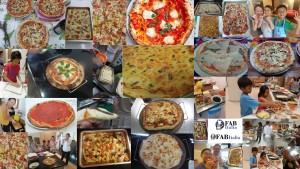
ToTT, Neapolitan PIZZA Craze!!!!!! Friday 13 Mar 2015, 10:00am to 1:00pm
Did you know that in Italy we have a lot of different ways to prepare pizza? Romana, Napoletana, Genovese, etc… And that there is a theory that you need to study about pizza? From leavening, to yeast, ingredients, “families”, tips, etc… to make it healthy, digestible, and nutrient.
If you want to know EVERYTHING about ORIGINAL ITALIAN PIZZA, and how to make a really good one at home and for your dears and friends, you cannot miss this opportunity.
Tons of information which are not commonly shared. Technical material (hand-outs on the methods of making pizza, and Neapolitan pizza) for the participants, and special pizza flour coming from Italy just for you!
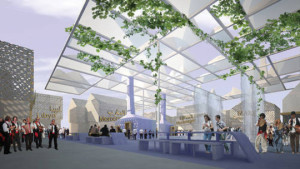
Registration at 9.15am
On the occasion of Singapore Design Week, Singapore’s 50th Anniversary and celebrating 50 years of diplomatic ties between Italy and Singapore, the Italian Embassy, the Italian Cultural Institute and the Italian Trade Agency in collaboration with the Polytechnic University of Milan and NUS present a half-day seminar featuring the innovative project of the 9 Cluster Pavilions @ EXPO Milano 2015, a new exhibit model and a contemporary experience of participatory design under the coordination of the Milan Polytechnic, involving 18 foreign Universities, teachers and students from all over the world. The event will host the opening speech of the Italian Ambassador, Paolo Crudele, and the main speaker will be Prof. Alessandro Biamonti from Politecnico of Milan accompanied by Prof. Christian Boucharenc and other prestigious local design professors and professionals from NUS.
For more info:
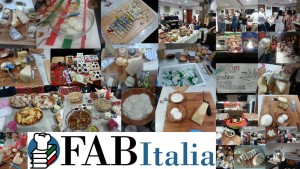
For cheese tasting participation, in order to pay the rental and buy all the cheese, food, wine, drinks, and any other item in advance, You are kindly requested to transfer the contribution of S$60.00 in advance to my POSB Saving Account and inform me about the transfer. I will acknowledge upon receive.
Bank transfer coordinates: POSB Saving Account, name Fabrizio Righi, No 010-90148-0
The condition is because in the past some unfair participants didn’t respect their word and commitment, did not come last moment, nor pay and of course I occurred in the expense for their quota of food and cover of the costs.
Max 20 pax, on the basis of first come first serve.
===============================================
Here are the event briefs:
Details of event:
Date: Wed 18 March 2015
Time: 7.30pm – 9.30pm
Price: See Offer on Registration page
Venue: Restaurant Trattoria Capri – 3 Binjai Park, Bukit Timah, Singapore 589819
RSVP: RSVP with payment – on a 1st come 1st serve approach
(* please follow payment instructions provided)
Thank you!
*********************************************************
HURRY, SIGNUP ASAP ! ! !
Due to limited venue capacity, we will close registration once reach.
There won’t be any walk-ins registration.
**********************************************************
*** Please Spread The Word Around . . . ***
FAQs
Are there ID requirements or an age limit to enter the event?
Yes, must be above 18 years of age (for wine consumption) as on event date
Is the wine free flow?
NO, you have one glass of Italian red wine included in the offer. The most of the cost is for the lots of different cheese and varieties, and other food, rental, disposable material. If you want more wine, you can have with a 10% discount a la carte. If you are sure you come, we can organise something like a bottle of wine for you at chef price that you will pay in advance. But if you want to taste with many different wines (which you can request at a la carte from the Restaurant), I would say that it is possible, by the way I emphasize that the focus of my event is on the experience of Italian cheese.
Where can I contact the organizer with any questions?
fabrizio_righi@yahoo.it or Facebook message
Is my registration/ticket transferrable?
Yes, on condition that pre-notification given at least 48 hrs before event. Thank you
Can I update my registration information?
Yes,
1) email to fabrizio_righi@yahoo.it
2) Or refer to the facebook group
https://www.facebook.com/groups/335446226608937/
then to the event
https://www.facebook.com/events/983090381702494/
Do I have to bring my printed ticket to the event?
Currently there is no printed ticket. You give your name to me, pay in advance via bank transfer and inform me about the transfer. I will keep record of your file and print a list of participants who have regularly paid for the event. Just tell me your name when you reach the place.
What is the refund policy?
We encourage you to schedule to attend per agreement.
Alternatively, we will allow you to transfer your tickets to another friend if you can provide his/her Name, HP, Email – at least 48 hrs before event.
We regret that as payment is automated via bank transfer and we occur costs for your presence in advance and, as such, refund will not be possible.

